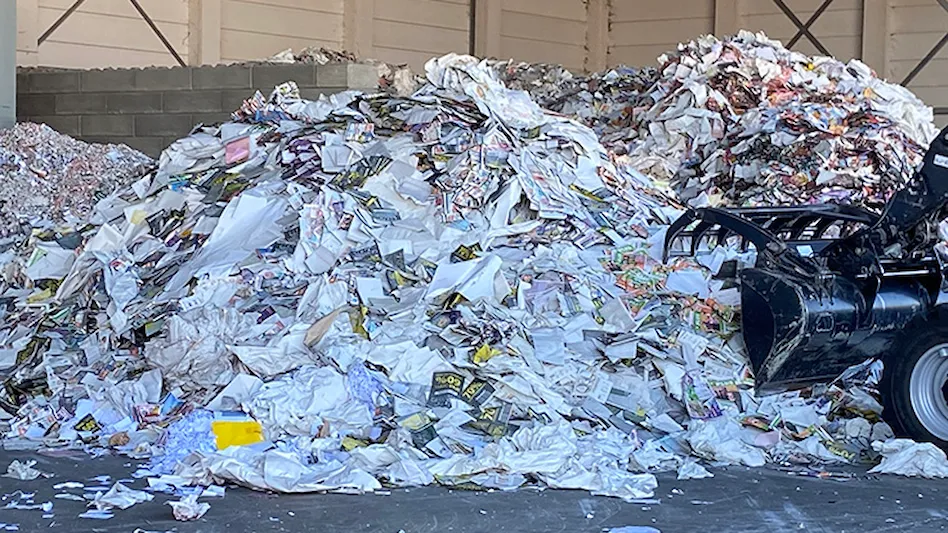
Recycling Today archives
A set of recovered fiber market reports gathered by the Brussels-based Bureau of International Recycling (BIR) shows a sharp divide between market conditions in Europe and those in North America.
Veteran recovered fiber executive Myles Cohen, now a consultant based in the Atlanta area, writes that prices for old corrugated containers (OCC) and other commonly traded grades in the United States increased this January for the ninth or 10th month in a row.
“This is not about increased demand but rather decreasing supplies,” he says. "Domestic mills remain nervous about not being able to get enough recovered fiber feedstock to keep their machines running, so they are scrambling to find tons and bidding up the price in the process.”
Cohen says one sizable recycler and mill operator in the U.S. has been keeping some grades of material it used to offer on the spot market for its own mills.
“Across the U.S., OCC, mixed paper and double-lined draft [DLK] are much in demand, resulting in higher prices," he says. "Regarding higher grades like sorted office paper [SOP], coated book and white ledger, printers are slow at this time of year, but pricing has remained steady and relatively flat.”
Reinhold Schmidt of Recycling Karla Schmidt, reporting from Germany, says in last year’s fourth quarter in his region of Europe, “Demand from the mills did not improve, with no ‘Christmas business’ as in previous years.
“What is not produced does not come back, and so the collection rate has remained lower than in recent years. ... Toward the end of [2023], paper and board manufacturers announced longer shutdowns; some machines were stopped before Christmas and only put back into operation around two weeks later.”
The regional decline in demand has been paired with a stagnant export market. “Exports remained unchanged until December, but then declined owing to increased freight costs as ships to the Far East had to take the longer route around the Cape of Good Hope owing to the crisis in the Red Sea," Schmidt says.
BIR Paper Division member Ekrem Demircioglu says Turkey's mills are not providing a boom market for European paper recyclers either.
“Having begun in September 2022, the contraction in [fiber] demand continued throughout 2023, particularly for brown paper mills where capacity utilization rates decreased to 70 percent,” Demircioglu writes. “Turkey’s high levels of inflation and rapid increase in foreign exchange, along with the effects of the February 2023 earthquake, led to a contraction in its economy and to rising unemployment rates."
Cohen characterizes the export market for U.S. recyclers as mixed. “The first 10 months of 2023 saw a reduction in purchases by India, Indonesia, Taiwan and South Korea, whereas Malaysia and Thailand significantly increased their buying of U.S. material,” he writes.
Cohen says full-year U.S. export figures for 2023 likely will confirm Thailand as the biggest buyer of OCC out of the U.S. while US shipments to Mexico may drop by more than 50 percent in 2023.
Latest from Recycling Today
- Genesis regional sales managers add Canada to their territories
- Casella reports mixed Q3 performance
- Smurfit Westrock reports ‘excellent’ results in first quarter as merged group
- Cascades makes organizational changes to support ‘strategic growth’
- Tradefox hosts webinar on growing your buyer base
- Sustainable packaging design: Reducing food packaging waste by building a circular economy
- Allentown, Pennsylvania, awards collection contract to JP Mascaro & Sons
- Maersk, Hapag-Lloyd partner to form Gemini Cooperation network





